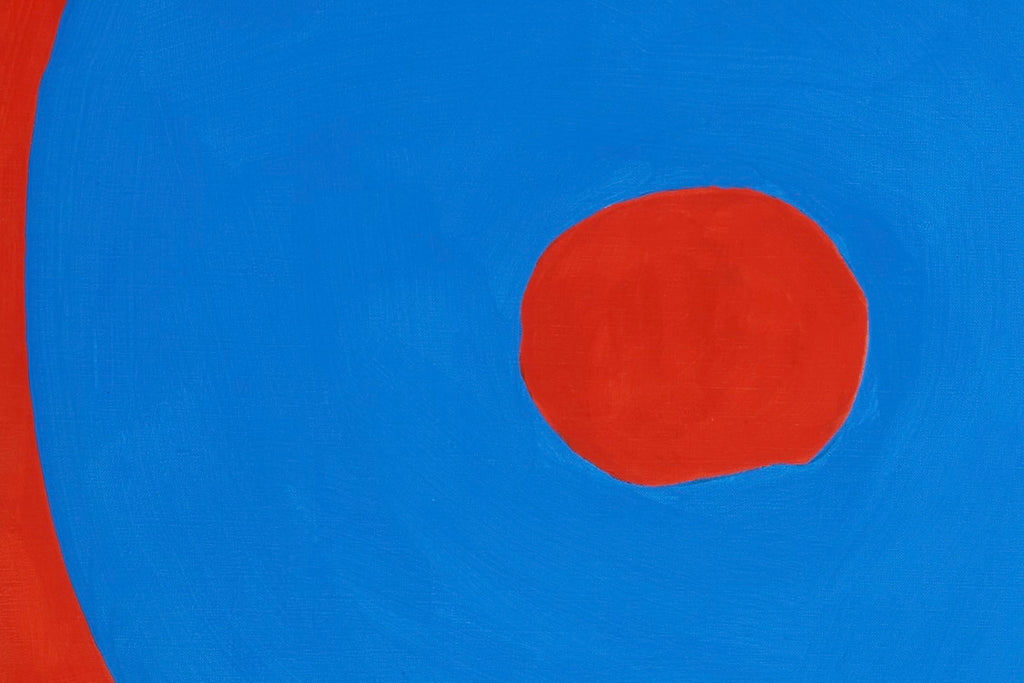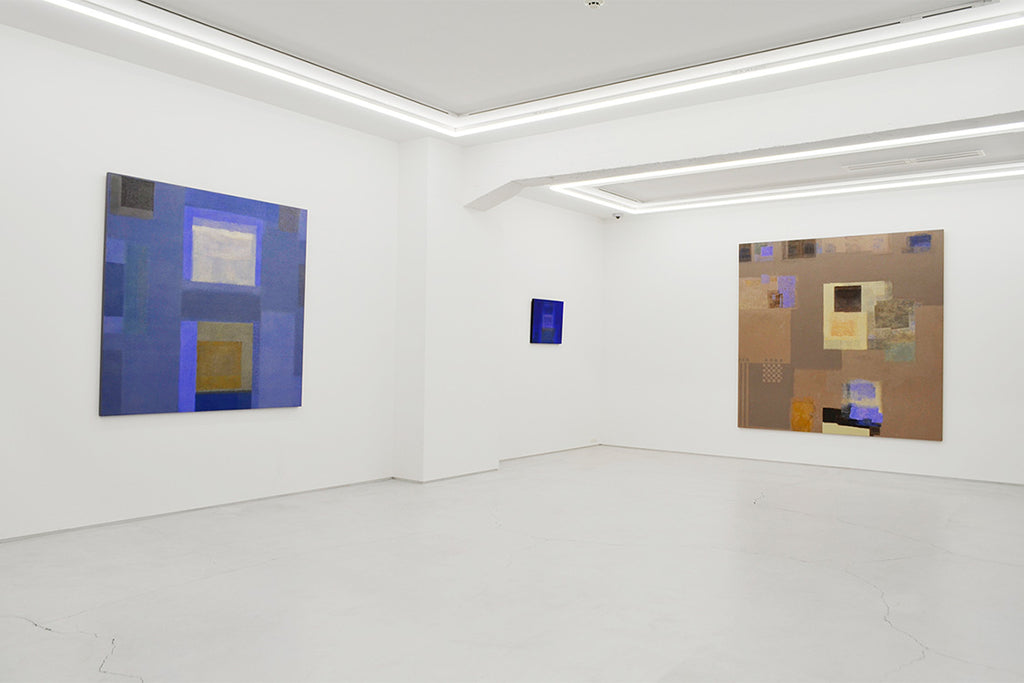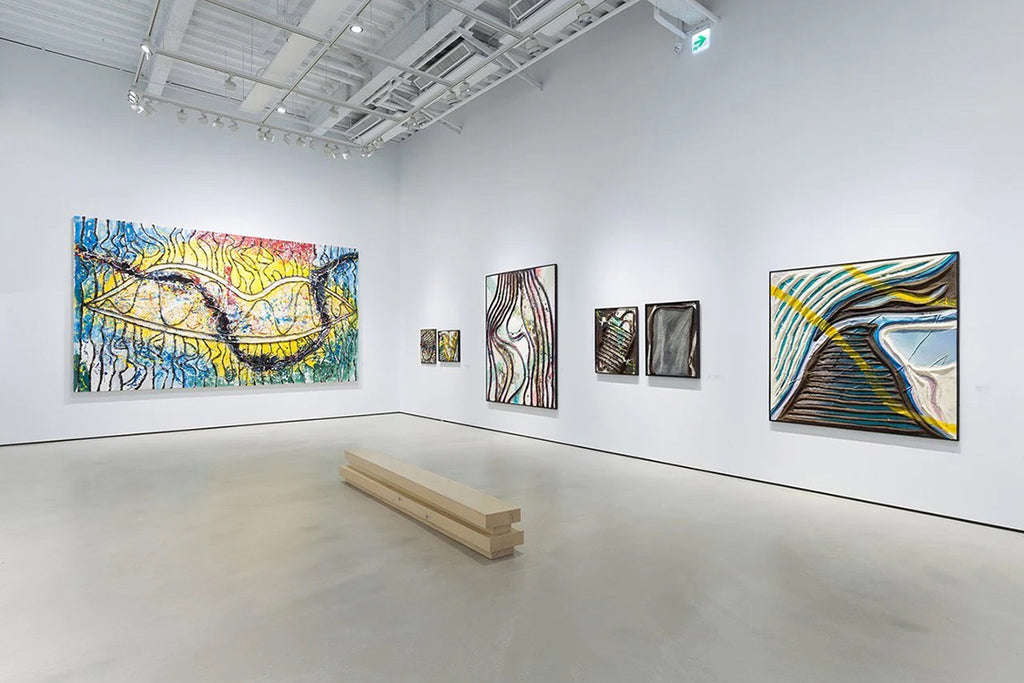ARTICLES
Yoichiro Kawaguchi: Rich Colors and Swirling Shapes|The World of Science Art
A New Appreciation Contemporary Japanese and Asian Art
9/23

“YOICHIRO KAWAGUCHI: Intelligence · Deep Sea · Universe” Whitestone Ginza New Gallery, 2018
In our ongoing series, we present the digital archive of the book 'A New Appreciation Contemporary Japanese and Asian Art' This book delves into internationally acclaimed artists and the dynamics of the Asian art market. The ninth installment introduces Yoichiro Kawaguchi.
Rich Colors and Swirling Shapes|The World of Science Art
Nobuko Nakano
Brain Scientist
Kawaguchi’s art is distinguished by his frequent use of combinations of primary colors and forms resembling deep-sea creatures. These striking features may be related, consciously or unconsciously, to his having grown up in Tanegashima, a southern Japanese island with a particular evolutionary history. The color combinations differ from those in the natural world, giving the viewer a sense of exceed.ing human color perception limits.
The locus of human color perception is in the brain, rather than in external light. The brain has the ability to identify wave lengths of light, in effect painting objects. Some animals do not have color vision and it is well known that dogs see a world of vision different from ours. Sea creatures do have color vision. Color vision present in animals from fish to primates is thought to be importantly related to our evolution from a common ancestor. Fish, reptiles, and birds have a four-color type of vision, while humans have a three-color type of vision, and other mammals have a two-color type of vision. Many species of fish, reptiles, and birds display vivid colors.

Computer Graphics Artist Yoichiro Kawaguchi
Paradise, The Universe, Futuristic Art Space Bird Series
Kawaguchi’s Space Bird series, featuring bird motifs, is a good example of his rich use of color. Projecting to a future time, he imagines creatures that could exist according to laws of nature hundreds of millions of years from now. This is a major aspect of Kawaguchi’s work.
Prominent color is advantageous for sexual selection and strategies for survival. Strong color combinations attract our attention, make us feel ill at ease, and fundamentally shake us from the human tendency to be at ease in comfortable environments. We are paradoxically reminded of the role of surging power in the need to hunt for prey and to accomplish sexual selection in the history of the past hundreds of millions of years.
A major feature of Kawaguchi’s work is his transformation of visual aspects of shape to a different modality. We can be deceived by the visual impression of a smooth surface, for example, made to appear rough through the effect of remov.ing gloss. Given a physical visual stimulus, nerve cells react and change tactile perception before actually touching a surface.
Kawaguchi’s skillful incorporation of the phenomenon of pre-conscious sensation transformation allows him to create marine life with an effect similar to Satsuma cut glass art. Unique shapes enhanced with rich color give the feel of a texture smoother than glass and accentuate the viewer’s sense of a life-like surface.

Kawaguchi (l.) receiving the SIGGRAPH Award
Hints of Japanese Tradition and Free Movement in Time
Kawaguchi often takes inspiration from traditional Japanese culture and uses traditional techniques in his work. His images of the future world are enhanced by his thoughts on the relationship between the use of tools and a sense of time. Rather than simple attraction to the intuitive charm of traditional culture, Kawaguchi aims to share with his audience the transmission of diverse technology and culture through the long history of time.
A technically advanced work affects human cognition, allowing us to experience eternity for in an instant, for a moment, though we are mortal. It also gives us a feeling of free movement along the axis of time. Art allows us to go to a place far in the future, or to a past no longer in our reach.
Our brains work on two types of decision-making processes. One has to do with thought and is deliberative and more accurate than the second system that is quick, related to action and flight, and reflective of desire. There is a tendency in present day society to value quick-thinking and speed, but it is questionable that those qualities would be advantageous for survival over the long-term. Kawaguchi’s work seems to be reminding us that art is created on the premise of longevity and is instrumental in suppressing the human desire to act quickly to maximize immediate gain.

Yoichiro Kawaguchi exhibition at the Karuizawa New Art Museum
Nobuko Nakano
Born in Tokyo. Completed the doctoral course at Tokyo University Graduate School of Medicine. Brian scientist, medical doctor, cognitive scientist, critic. Professor at East Japan International University. Active as commentator for media and television news programs. Publications include . Furin (adultery), Anata no no no shitsukekata (how to train your brain), Metaru no (metal brain), Shiawase wo tsukamu no no tsukaikata (how to use your brain to attain happiness).
Book Information
Title: A New Appreciation Contemporary Japanese and Asian Art (English Edition)
Publisher : Whitestone Co., Ltd.
Release Date : February 26, 2020
*Information in this article is at the time of publication.



